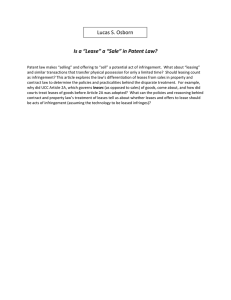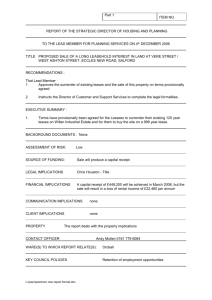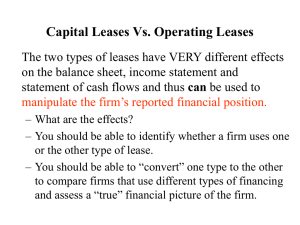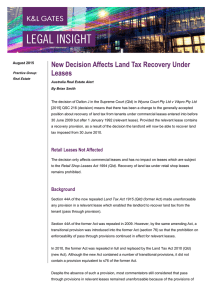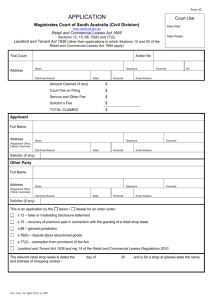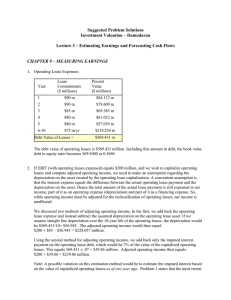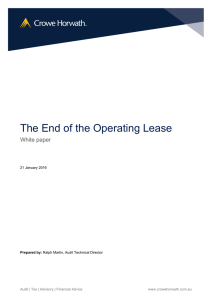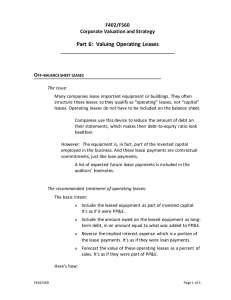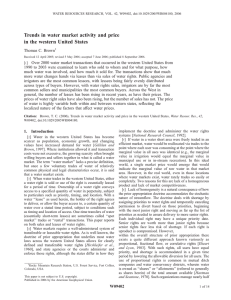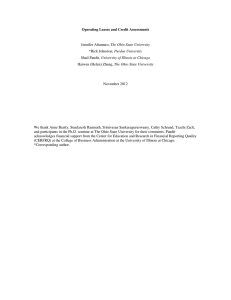2012-13 (Mar) CVS Operating Leases when
advertisement
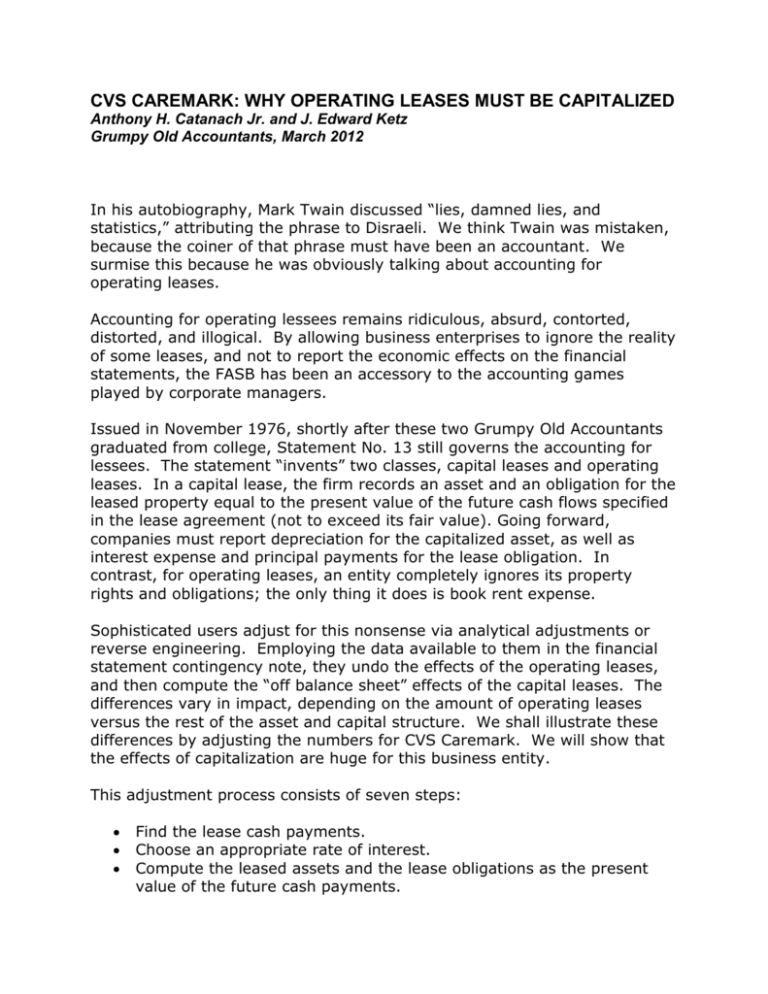
CVS CAREMARK: WHY OPERATING LEASES MUST BE CAPITALIZED Anthony H. Catanach Jr. and J. Edward Ketz Grumpy Old Accountants, March 2012 In his autobiography, Mark Twain discussed “lies, damned lies, and statistics,” attributing the phrase to Disraeli. We think Twain was mistaken, because the coiner of that phrase must have been an accountant. We surmise this because he was obviously talking about accounting for operating leases. Accounting for operating lessees remains ridiculous, absurd, contorted, distorted, and illogical. By allowing business enterprises to ignore the reality of some leases, and not to report the economic effects on the financial statements, the FASB has been an accessory to the accounting games played by corporate managers. Issued in November 1976, shortly after these two Grumpy Old Accountants graduated from college, Statement No. 13 still governs the accounting for lessees. The statement “invents” two classes, capital leases and operating leases. In a capital lease, the firm records an asset and an obligation for the leased property equal to the present value of the future cash flows specified in the lease agreement (not to exceed its fair value). Going forward, companies must report depreciation for the capitalized asset, as well as interest expense and principal payments for the lease obligation. In contrast, for operating leases, an entity completely ignores its property rights and obligations; the only thing it does is book rent expense. Sophisticated users adjust for this nonsense via analytical adjustments or reverse engineering. Employing the data available to them in the financial statement contingency note, they undo the effects of the operating leases, and then compute the “off balance sheet” effects of the capital leases. The differences vary in impact, depending on the amount of operating leases versus the rest of the asset and capital structure. We shall illustrate these differences by adjusting the numbers for CVS Caremark. We will show that the effects of capitalization are huge for this business entity. This adjustment process consists of seven steps: Find the lease cash payments. Choose an appropriate rate of interest. Compute the leased assets and the lease obligations as the present value of the future cash payments. Estimate the life of the leased assets and their current age. With these assumptions, calculate depreciation expense and accumulated depreciation. Estimate the interest expense. Estimate the change in income taxes and deferred income taxes. With these adjustments, prepare the adjusted income statement and the adjusted balance sheet. We carried out these steps for CVS Caremark using its annual report for 2011. We obtained the following results (dollar amounts in millions of dollars). Net income Reported 3,461 Adjusted Change 2,932 (15)% Current Assets Total Assets 18,594 64,543 18,954 73,700 14 % Current Debts Long-term debts Stockholders’ Equity 11,956 14,536 38,051 14,002 27,755 31,943 17 % 91 % (16)% The two methods generate the same expenses over the life of the lease, though they create different year-to-year effects. Capitalization of the leases has a negative income effect for CVS in 2011, for the removal of rent expense is swamped by increasing depreciation and interest expense, which is partially offset by a reduction in income tax expense. Total assets increase by 14 percent because of the recognition of the capitalized lease asset. Current assets, of course, are not affected. Current debts increase by 17 percent. Long-term debts increase by a staggering 91 percent. Stockholders’ equity declines 16 percent because of the income effects on past years and the current year. These account changes also impact widely used financial ratios. For example, capitalization of the operating leases causes the current ratio to decrease from 1.56 to 1.33. Return on assets declines from 5 percent to 4 percent. But the largest effect is found in the debt-to-equity metric. When the operating leases are not capitalized, CVS has a debt/equity measure of 0.70; however, when capitalized, this ratio jumps to 1.31. Sophisticated investors perform these adjustments to obtain a clearer vision of the entity’s future than presented by the reported numbers. While sophisticated users can do this, it does not excuse the FASB’s inertia to change its lease pronouncements. The adjustment and estimation process is costly and involves estimation errors (e.g., did we use the correct interest rate?). Additionally, unsophisticated users might be hurt by their inability to adjust reported numbers appropriately. Finally, contracts might employ reported numbers, thereby biasing the relationship among the various parties to the contract. The FASB should get off its collective back-side and correct the mistakes in Statement No. 13. In case the FASB hasn’t noticed, the world has changed dramatically during the past 36 years. Let’s make the current exposure draft reality! This essay reflects the opinion of the authors and not necessarily the opinions of The Pennsylvania State University, The American College, or Villanova University.
